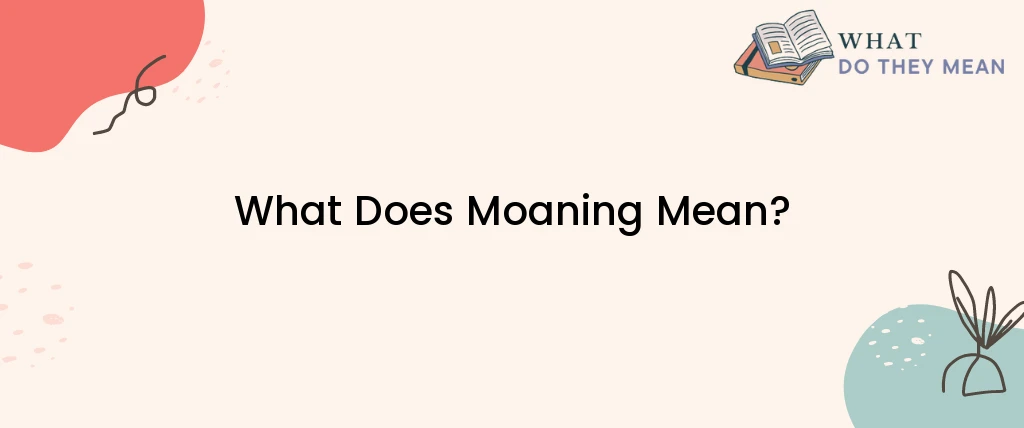Moaning typically refers to making low, sustained, and often expressive sounds, often in response to physical or emotional sensations. It is a natural human expression that can be used to convey a wide range of emotions and experiences, such as pleasure, pain, frustration, or even boredom.
In a sexual context, moaning may be associated with arousal and pleasure and is often used as a way to communicate one’s enjoyment to their partner. However, it is important to remember that everyone expresses themselves differently and moaning is not the only way to communicate pleasure or arousal.
What is Moaning?
Moaning is a vocal expression that typically involves making low, sustained sounds with one’s voice. These sounds can vary in volume, pitch, and intensity, and may be accompanied by other physical expressions such as facial expressions, body movements, or gestures. Moaning is a natural response to certain experiences, such as pleasure, pain, or emotional arousal, and is often used as a way to communicate these experiences to others.
The Meaning of Moaning
The meaning of moaning can vary depending on the context in which it occurs. In some situations, moaning may be a sign of discomfort or pain, such as when someone is experiencing physical or emotional distress. In other situations, moaning may indicate pleasure or sexual arousal and may be used as a way to communicate one’s enjoyment to their partner.
In a sexual context, moaning may serve several functions. For one, it may be a way to signal to one’s partner that they are enjoying the sexual experience. Moaning can also enhance the sexual experience by adding an auditory component to the physical sensations of sex. It can also be a way for individuals to express themselves sexually and to feel more connected to their partner.
Cultural and Social Contexts of Moaning
The cultural and social contexts in which moaning occurs can influence its meaning and interpretation. For example, in some cultures, moaning may be considered taboo or inappropriate, particularly when it is associated with sexual behavior. In other cultures, moaning may be seen as a natural and even desirable expression of sexual pleasure.
In some social contexts, such as in public spaces or in the presence of others, moaning may be suppressed or limited in order to conform to social norms or expectations. In private spaces or with trusted partners, however, moaning may be more freely expressed.
Factors Influencing Moaning
There are several factors that can influence the occurrence and interpretation of moaning. One such factor is the individual’s personality and comfort level with vocal expression. Some individuals may be more reserved and less likely to moan, while others may be more expressive and comfortable with vocalizing their emotions.
Another factor is the nature of the experience that is eliciting the moaning. For example, pain may elicit involuntary moans, while pleasure may lead to more intentional and sustained moaning. The intensity and duration of the moans may also vary depending on the situation.
The context in which the moaning occurs can also influence its interpretation. For example, moaning during a medical procedure may be seen as a sign of pain or discomfort, while moaning during sex may be interpreted as a sign of pleasure and enjoyment.
Conclusion
In conclusion, moaning is a natural and universal behavior that can convey a wide range of emotions and experiences. Its meaning and significance may vary depending on the context in which it occurs, as well as the individual’s personality and comfort level with vocal expression. While moaning is often associated with sexual behavior, it can also be a sign of pain, discomfort, or emotional arousal. Understanding the meaning and cultural significance of moaning can help individuals better understand themselves and their partners, and can contribute to a more fulfilling and satisfying sexual experience. Ultimately, the importance of moaning lies not in the behavior itself, but in the communication and connection it can foster between individuals.

As a researcher, I am curious and driven by the pursuit of knowledge. I approach my work with a critical eye, carefully evaluating sources and methods to ensure that my findings are accurate and reliable. Whether delving into scientific studies, historical records, or cutting-edge technologies, I am always seeking to expand my understanding and make new discoveries. I am dedicated to uncovering new insights and finding solutions to complex problems, and am driven by a passion for uncovering the truth.

